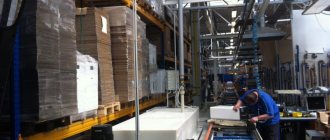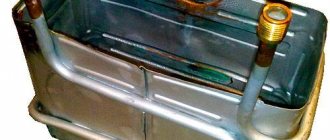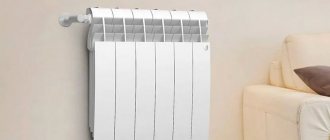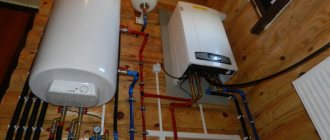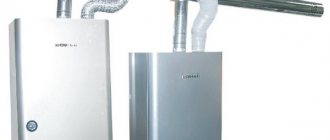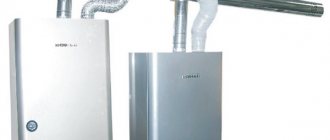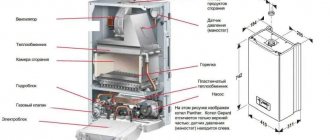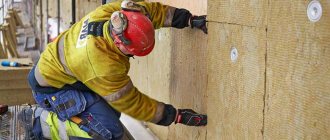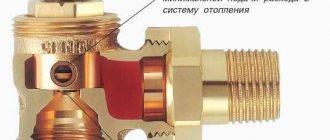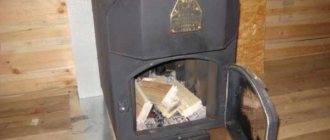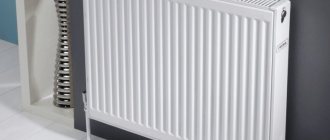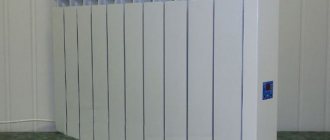Living on the outskirts of the city or in remote sparsely populated areas is a guarantee of silence, complete peace, and a favorable environment. But construction in such areas is often accompanied by many difficulties due to problems with infrastructure and various communications. The most pressing of them is the lack of electricity; it is important to solve it first. As you know, long-term installation of power lines from a centralized network is too expensive. It will be much cheaper to organize uninterrupted autonomous power supply at home. This is not so difficult to do if you carefully read the possible options and choose the most profitable one for yourself.
Installing an autonomous power supply is the only alternative when connecting to a centralized network is time-consuming, unprofitable, and problematic Source rina.pro
Requirements for home independent complexes
Before purchasing equipment to supply your home with electricity, you should calculate its required volume, which will cover the needs of all household appliances and other household electrical devices. To do this, the total power of all available electrical consumers is calculated. The most common of them are:
- refrigeration and freezer compartments;
- heating system;
- air conditioner;
- Appliances;
- pump (for delivering water from a well to the building);
- power tool.
The basic power of any unit can be found out from the instructions supplied with it by the manufacturer. This indicator is individual for different devices. But all devices certainly require a stable supply of electricity; voltage drops are unacceptable for them.
The data obtained is summarized, as a result of which they find out approximately how many kilowatt-hours an autonomous electrical system should produce daily. It is recommended to increase this number by 20-25% in order to have a small margin to increase energy consumption.
The total energy consumption in the house depends on the electrical appliances used, their models, as well as the constant number of residents Source dagzhkh.ru
Biogas as an alternative to electricity
With the help of special installations for processing waste, it is possible to obtain fertilizer and biogas literally from garbage.
The following wastes are used:
- manure;
- contents of cesspools;
- plant tops;
- weeds;
- silage;
- foliage;
- missing fruits and vegetables and other agricultural waste.
In the future, biogas is used at the discretion of the installation owner. For example, compact power plants running on biogas are sold.
Small biogas plants for the home are able to provide the farmstead with the necessary amount of heat, even if there are only a few heads of cattle, as well as food waste from their site.
From 1 ton of manure you can get 40 m3 of gas. 1 m3 of biogas costs - 3.6 rubles.
Where to buy a biogas plant
For example, companies:
- LLC Investprom from Stary Oskol produces all kinds of construction equipment, mini-factories, including modular bioreactors. Volume from 10 m3 or more (automatic pumping and biogas purification system). Contact phone number 8(800) 234-05-94.
- Archey LLC, a company from Rostov-on-Don, offers modular bioreactors for processing animal waste (poultry farms, pigsties, etc.) +7 (863) 2947988.
- And BPC Engineering LLC from Moscow offers mini power plants running on biogas. Phone +7 (495) 7803165.
Pros and cons of implementing autonomous power supply
The undeniable advantages of installing an individual electrical network are:
- independence from main power supply;
- minimum cost of one kilowatt of electric current;
- stability of electrical supply;
The presence of an autonomous power source in the house allows you to uninterruptedly receive electricity even when others are temporarily deprived of this opportunity due to repairs on power lines.
Flaws:
- high price of equipment;
- system maintenance costs are paid by the users themselves;
- space is required to accommodate an independent complex.
The positive and negative aspects of autonomous power supply described above apply to all types of existing systems. Moreover, each of them additionally has its own individual advantages and disadvantages. The latter to some extent affects the generated electrical power per unit of time and the cost of its production.
Using an autonomous energy supply, the home owner becomes completely independent in terms of obtaining electricity for consumption Source elektrikexpert.ru
Options for a summer residence
If it is necessary to create an independent power supply for a dacha, the option of using a solar power plant is also the most acceptable. In this case, if the equipment is used seasonally, it is possible to mothball the devices or take them out of operation for the period when there is no need for operation.
The option of building a wind generator is also quite affordable and justified. Because having incurred some one-time financial expenses, in the future you can, depending on your needs, receive your own electricity.
The option of using the “wind generator + solar power plant” scheme is also relevant in this case, and allows you to create a completely autonomous and reliable power supply scheme.
Types of alternative energy sources
Modern technologies make it possible to obtain electricity from the following autonomous power systems:
- generators (diesel, gas, gasoline);
- solar power plants;
- wind generators.
The above equipment differs in price and profitability. In addition, for the installation of each of the listed installations, it is important to comply with certain conditions, which is sometimes impossible. It all depends on the location of the site, the local climate, and other factors.
The efficiency of using certain alternative energy sources directly depends on the region in which installation is required Source proekt-sam.ru
Electric generators
Modern generator sets are considered the most reliable and have the lowest price (compared to other independent systems). But the cost of one kilowatt of energy is extremely high. Such devices contain an internal combustion engine. It is connected to a coil, which, when untwisted, generates electrical energy.
When setting up a backup autonomous power supply, generators are connected to the electrical network in parallel. They additionally have an automatic connection system built into them, which starts the device when contact with the centralized power grid is lost. Electric generators can be adjusted to the required parameters. For example, it is possible to turn on an autonomous system only a few minutes after the power goes out. As a result, there is no need to manually start the unit, as well as stop it when the central power supply is restored.
The main advantages of modern generator sets:
- mobility;
- relatively small dimensions, which are influenced solely by the power of the unit;
- there is no need to install auxiliary devices that provide electricity generation;
- work regardless of weather, season, location.
Flaws:
- noisy operation, depending on the availability of high-quality fuel;
- difficult to start in the cold season (most of all this applies to diesel units);
- constant monitoring is required;
- the need for manual refueling of the tank;
- high cost of fuel materials.
Attention! Electric generators running on gasoline or diesel are not environmentally friendly. During their operation, harmful substances are released into the atmosphere. The latter should be taken into account when choosing the most suitable autonomous power supply system for yourself.
The operation of any electric generator requires periodic manual refueling of the tank Source iws.ua
Heat pumps for heating
Heat pumps are one of the most advanced technological solutions in obtaining alternative energy for your home. They are not only the most convenient, but also environmentally friendly.
Their operation will significantly reduce the costs associated with paying for cooling and heating the premises.
Image gallery
Photo from
Heat pump with heat intake from ground or groundwater
Air-to-water or air-to-air heat pump external unit
The relationship between the external and internal components of eco-systems
Heat pump indoor unit equipment
Classification of heat pumps
I classify heat pumps by the number of circuits, the source of energy and the method of obtaining it.
Depending on the final needs, heat pumps can be:
- One-, two- or three-circuit;
- One- or two-capacitor;
- With the possibility of heating or with the possibility of heating and cooling.
Based on the type of energy source and method of obtaining it, the following heat pumps are distinguished:
- Soil - water. They are used in temperate climate zones with uniform heating of the earth, regardless of the time of year. For installation, a collector or probe is used, depending on the type of soil. Drilling shallow wells does not require obtaining permits.
- Air is water. Heat is accumulated from the air and directed to heat water. The installation will be appropriate in climate zones with winter temperatures not lower than -15 degrees.
- Water is water. Installation is determined by the presence of bodies of water (lakes, rivers, groundwater, wells, settling tanks). The efficiency of such a heat pump is very impressive, which is due to the high temperature of the source during the cold season.
- Water is air. In this combination, the same reservoirs act as a heat source, but the heat is transferred directly to the air used to heat the premises through a compressor. In this case, water does not act as a coolant.
- Soil is air. In this system, the heat conductor is the soil. Heat from the ground is transferred to the air through the compressor. Non-freezing liquids are used as energy carriers. This system is considered the most universal.
- Air is air. The operation of this system is similar to the operation of an air conditioner, capable of heating and cooling a room. This system is the cheapest, as it does not require excavation work or laying pipelines.
When choosing the type of heat source, you need to focus on the geology of the site and the possibility of unhindered excavation work, as well as the availability of free space.
If there is a shortage of free space, you will have to abandon heat sources such as earth and water and take heat from the air.
The efficiency of the system and the costs of its installation largely depend on the correct choice of the type of heat pump.
Working principle of a heat pump
The operating principle of heat pumps is based on the use of the Carnot cycle, which, as a result of sharp compression of the coolant, provides an increase in temperature.
Most climate control devices with compressor units (refrigerator, freezer, air conditioner) operate on the same principle, but with the opposite effect.
The main operating cycle, which is implemented in the chambers of these units, has the opposite effect - as a result of a sharp expansion, a narrowing of the refrigerant occurs.
That is why one of the most accessible methods for manufacturing a heat pump is based on the use of individual functional units used in climate control equipment.
So, a household refrigerator can be used to make a heat pump. Its evaporator and condenser will play the role of heat exchangers, removing thermal energy from the environment and directing it directly to heating the coolant that circulates in the heating system.
Low-grade heat from soil, air or water, together with the coolant, enters the evaporator, where it turns into gas, and is then further compressed by the compressor, resulting in the temperature becoming even higher
Assembling a heat pump from scrap materials
Using old household appliances, or rather, their individual components, you can assemble a heat pump yourself. Let's look at how this can be done below.
Step #1 - prepare the compressor and condenser
Work begins with the preparation of the compressor part of the pump, the functions of which will be assigned to the corresponding unit of the air conditioner or refrigerator. This unit must be secured with a soft suspension on one of the walls of the workroom where it will be convenient.
After this, you need to make a capacitor. A 100 liter stainless steel tank is ideal for this. You need to install a coil into it (you can take a ready-made copper tube from an old air conditioner or refrigerator.
The prepared tank must be cut lengthwise into two equal parts using a grinder - this is necessary for installing and securing the coil in the body of the future capacitor.
After installing the coil in one of the halves, both parts of the tank must be connected and welded together so as to form a closed tank.
To make the condenser, a 100-liter stainless steel tank was used; using a grinder, it was cut in half, a coil was installed, and reverse welding was performed.
Please note that when welding you need to use special electrodes, and even better, use argon welding, only it can ensure maximum quality of the seam.
Step #2 - making an evaporator
To make an evaporator, you will need a sealed plastic tank with a volume of 75-80 liters, into which you will need to place a coil made of pipe with a diameter of ¾ inches.
To make a coil, it is enough to wrap a copper tube around a steel pipe with a diameter of 300-400 mm, followed by fixing the turns with a perforated angle
Threads must be cut at the ends of the tube to subsequently ensure connection with the pipeline. Once assembly is complete and the seal has been checked, the evaporator should be secured to the wall of the workroom using brackets of the appropriate size.
It is better to entrust the completion of assembly to a specialist. While some of the assembly can be done yourself, soldering the copper pipes and pumping in the refrigerant should be done by a professional. Assembly of the main part of the pump ends with the connection of heating batteries and a heat exchanger.
It should be noted that this system is low-power. Therefore, it will be better if the heat pump becomes an additional part of the existing heating system.
Step #3 - arrangement and connection of an external device
The best source of heat is water from a well or borehole. It never freezes and even in winter its temperature rarely drops below +12 degrees. It will be necessary to install two such wells.
Water will be drawn from one well and subsequently supplied to the evaporator.
Groundwater energy can be used year-round. Its temperature is not affected by weather conditions and seasons
Next, the waste water will be discharged into the second well. All that remains is to connect it all to the inlet of the evaporator, to the outlet and seal it.
In principle, the system is ready for operation, but for its complete autonomy it will require an automation system that controls the temperature of the moving coolant in the heating circuits and freon pressure.
At first, you can get by with an ordinary starter, but it should be noted that starting the system after turning off the compressor can be done in 8-10 minutes - this time is necessary to equalize the freon pressure in the system.
Video description
Which generator to choose: diesel or gasoline?
Solar panels
The main advantage of such independent power plants is the affordable cost of one kilowatt of electricity. They only require free energy from the sun to function properly. The operating principle of such installations is to convert light photons into electrical charge.
In order for solar panels to produce the required power to power home appliances, their area must be large. 1 m2 of surface of such an installation produces approximately 100 W, while the voltage is about 25 V. This is only enough to slowly charge the battery and power the lamps.
Solar batteries are devices that collect light energy from the sun's rays and convert it into electric current Source 220-on.ru
To obtain the electric current of the required parameters, it is necessary to install auxiliary equipment: inverter, batteries, controller. The first convert direct voltage into alternating voltage; it must correspond to the same indicators of 220 V electricity from a centralized network. To reap the full benefits of a power plant, excess energy must be stored for future useful use.
Solar panels allow you to generate electricity only during the daytime in bright natural light. At night such devices are absolutely useless. To solve this problem, a controller is used: it recharges the batteries. The excess electricity accumulated on it is used up during the dark period of the day; in the morning the charge is replenished again from the panels that have resumed their functionality.
The advantages of the above-described type of autonomous power supply to the house include:
- automatic operating mode;
- no additional costs;
- environmental friendliness;
- no fuel reserve required.
Flaws:
- the efficiency of the installation depends on the activity of the sun, the area where the system is located, and the time of year;
- considerable cost of equipment;
- frequency of operation, depending on the presence of abundant sunlight;
- the panels take up a lot of space and need to be installed in an open area.
Important! The surfaces of functioning solar panels must be periodically cleaned to remove dust accumulation. Otherwise, the efficiency of their work will decrease.
Solar panels installed on the roof of a house do not take up useful space and are highly efficient Source termico-solar.com
Solar panels
The operating principle is based on the ability of electronic devices called photocells to convert the energy of photons from sunlight into electrical energy. This example of alternative energy is the most common.
Batteries produced for private use use silicon photocells. They come in two types:
- Polycrystalline. Very fragile and therefore require careful handling. They have low efficiency - no more than 15%. Average service life is 20 years. The advantage is low price.
- Monocrystalline. More reliable. The service life can reach 50 years. Efficiency 25%. The disadvantage is the high cost.
Advantages of solar panels:
- an inexhaustible source of energy for several decades;
- ease of installation and maintenance, operation does not require daily human intervention;
- durability;
- no harmful effects on the environment and humans.
Their disadvantages are the high cost of equipment, which takes a long time to pay for itself, and dependence on the intensity of sunlight. If the sky becomes cloudy, the power of the photocells decreases.
Video description
Solar panels.
Myths and reality. Many of the disadvantages of such power plants are easily resolved. Problems with the placement of this equipment completely disappear if installation is organized on the roof. It does not take up useful space, and nearby non-residential buildings and garden trees do not create shading. Considering the significant cost of the system, it is important to note: modern solar panels have a huge resource, so they manage to pay for themselves before their useful life ends.
In addition, you need to take into account: such a source of autonomous power supply at home implies fairly frequent charging and discharging of the battery. For this reason, its resource is rapidly decreasing. To have the necessary supply of electricity at night, the battery will have to be changed frequently.
Solar panels installed on the roof of a house do not take up useful space and are highly efficient Source termico-solar.com
Where and in what form to get energy resources
Use of solar panels
Traditional energy sources are thermal, nuclear and hydroelectric stations. Alternative energy supplies are self-renewing, efficient, cheap and environmentally friendly. In fact, energy is in natural resources, you just need to try to extract it. Without special skills, you can perform the following work:
- install solar collectors and batteries to power lighting or heat water;
- install wind generators;
- use heat pumps to heat a house using heat from water, earth or air;
- use biogas plants for processing animal, bird, and human waste.
The disadvantage of non-traditional energy sources is the large financial investments for their organization.
Autonomous power supply at home: ready-made solutions
Organizations that sell independent power supplies offer ready-made device packages that can work immediately after installation. For the most part, these are all kinds of sets of solar power plants, wind generators, and other devices that have completely different technical parameters.
Solar powered
One of the ready-made options for an autonomous home power supply system is highly efficient equipment that uses solar energy and converts it into electricity using solar panels. This process is shown schematically in the figure below.
Solar batteries generate direct electric current, which is subsequently converted into alternating current (used in everyday life) using an inverter Source gws-energy.ru
In the modern market, the White Nights 1500 W-100x2P power plants, produced by the Russian company, are quite in demand. The kit contains:
- polycrystalline panels – 2 pieces;
- inverter;
- charge controller;
- a set of connectors designed for connecting panels;
- cable;
- fastener
Technical specifications:
- operating voltage – 12 V;
- rated power of each battery is 100 W;
- recommended air temperature – 0-40°C;
- output voltage – 220 V, frequency – 50 Hz;
- rated power – 1.5 kW.
Features of wind generators
Vertical wind generator
Wind power sources operate on the principle of converting kinetic energy into mechanical energy, and then into alternating current. Electricity can be obtained with a minimum wind speed of 2 m/s. The optimal wind speed is from 5 to 8 m/s.
Types of wind generators
There are modifications based on the type of rotor mounting:
- Horizontal - characterized by a minimum amount of materials for manufacturing and high efficiency. The disadvantages of the device are the high mounting mast and the complexity of the mechanical part.
- Vertical - work in a wide range of wind speeds. The specificity of the generator is the need for additional fixation of the motor.
Depending on the number of blades, there are single- or multi-bladed models. Based on the material, the blades are classified into sail and rigid. The helical pitch of the installation can be variable (you can set the operating speed) and fixed.
When constructing a wind turbine, a foundation must be created and strengthened.
Wind generator design
Wind generator design
A finished wind generator consists of the following parts:
- tower - placed in a windy area;
- blade generator;
- blade controller – converts alternating current to direct current;
- inverter – transforms direct current into alternating current;
- storage battery;
- water tank.
The storage battery smooths out the difference between the windy season and the calm period.
Making a low-speed wind generator from a machine generator
Creating a wind generator from a car generator
Since a kit for assembling a wind generator costs from 250 to 300 thousand rubles, it is advisable to make the design yourself. You will need a car generator and a battery.
The blades enable the operation of other windmill devices. You can make them yourself from fabric, metal or plastic pipe as follows:
- Choose a material with good wind resistance - a thickness of 4 cm.
- Calculate the length of the blade so that the diameter of the pipe is 1/5.
- Cut the pipe and use it as templates.
- Walk along the edges of all elements with sandpaper to remove any irregularities.
- Fix the plastic blades on the aluminum disk.
- Balance the wheel by fixing it in a horizontal position.
- Grind the edges of the wind wheel while rotating.
The optimal blade design is a large number, but a smaller size.
The mast must be reliable, strong and not sway.
The mast manufacturing project must begin with the choice of material. You will need a steel pipe 7 m long and 150-200 m in diameter. If there are obstacles, the wheel rises 1 m higher than them.
For additional stability of the structure, pegs for tensioning are made from steel or galvanized cable 6-8 mm thick. The mast and pegs need to be concreted.
The process of remaking an autogenerator consists of rewinding the starter assembly and creating a rotor based on neodymium magnets. Holes for them are drilled in the device. Magnets must be placed alternating poles and the voids must be filled with epoxy.
The rotor is wrapped in paper to rewind the coil in one direction using a three-phase circuit. At the last stage, the generator is tested - at 300 rpm it should show 30 V.
The more turns on the coil, the more efficient the generator is.
Alternative wind sources of heat and electrical energy are collected after manufacturing the rotary axis. You will need a pipe with two bearings and a tail section made of galvanized sheet 1.2 mm thick.
The generator is attached to the mast by means of a professional pipe frame. The distance from the beam to the blades must be more than 25 cm. After assembling the basic structure, the charge controller, inverter and battery are installed.
